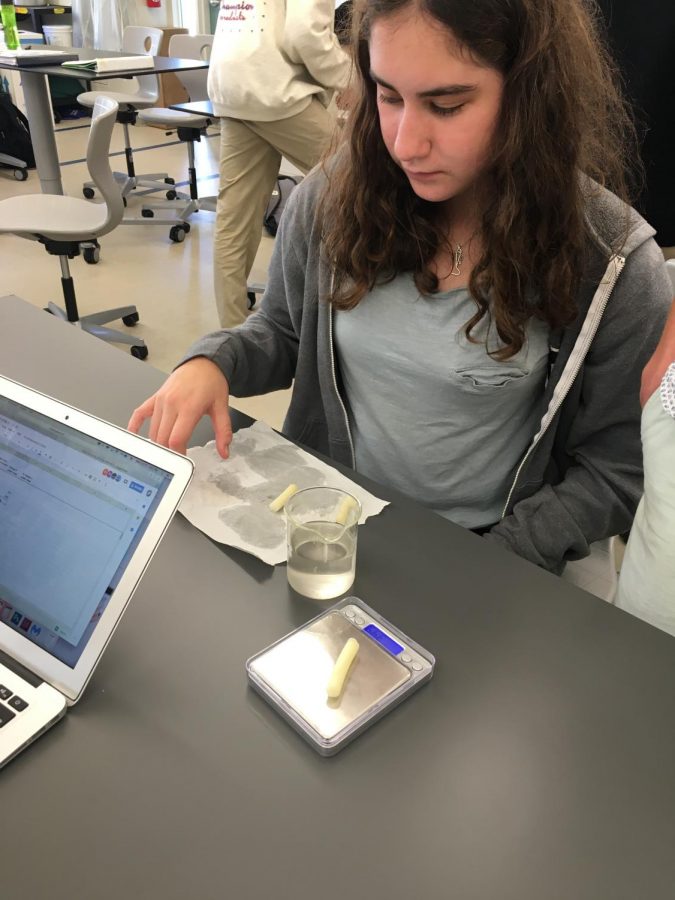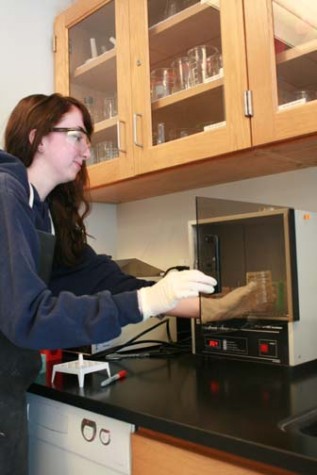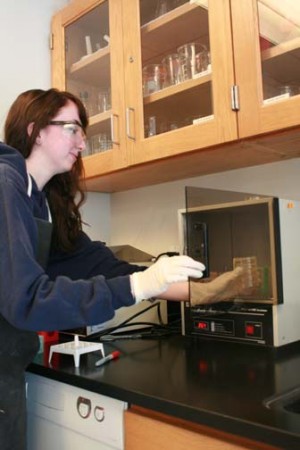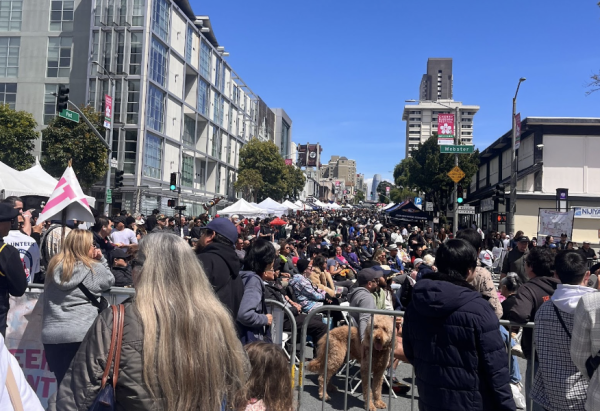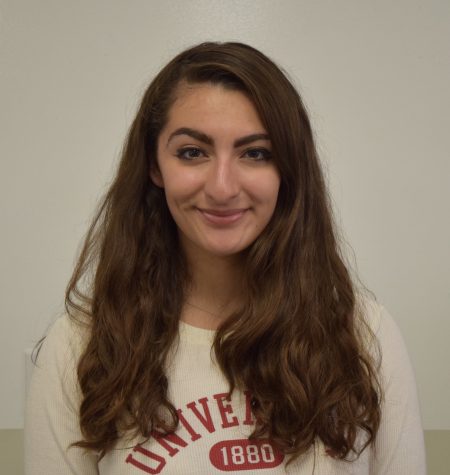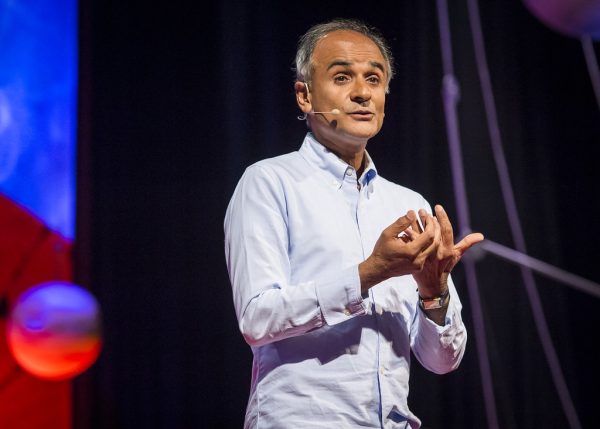Biology class learns about mitosis in potato lab
Nick Lutz | With Permission
Junior Estie Seligman takes potato slices out of the glucose solution to remeasure their masses for a lab demonstrating osmosis. Seligman’s lab group had a glucose concentration of 0.2 in their solution.
October 18, 2018
WEB EXCLUSIVE Juniors in C period International Baccalaureate Standard Level Biology class participated in a lab yesterday demonstrating the difference in the ways cells react in hypotonic, isotonic and hypertonic solutions.
The lab consisted of students cutting pieces of potato, measuring their individual masses and putting them in glucose solutions of varying concentrations. They then remeasured the potatoes’ masses to show results similar to those of cells, according to Biology teacher Clark Zhang.
“Potatoes are remarkably similar to human beings because they are made of cells,” Zhang said. “As French Nobel-Prize-winning scientist Jacque Monod said, ‘What is true of a bacterium is often true of human beings.’”
In the lab the potatoes represented cells. The cells then expanded, shriveled or stayed the same based on the level of glucose in the solution, according to Zhang’s in class explanation.
“This lab was about passive transport in cells,” junior Miley Sherman said. “It is interesting to learn about passive transport on paper and through notes, and then to see it explained through a more experiential media.”
Zhang, who did this lab in his high school biology class, has done the lab for many years with students to demonstrate passive transport.
“I would have never thought to do a lab like this with potatoes,” Sherman said. “It was interesting how the purpose of the lab could be executed without cells, and still have accurate results.”



